7 Lessons Growing a Bootstrapped SaaS to $50K MRR
Contents
Video Presentation
I recorded this video to explain the 7 lessons - if you prefer watching over reading, this is for you 👍 35 mins long.
If you prefer reading, here are the 7 lessons:
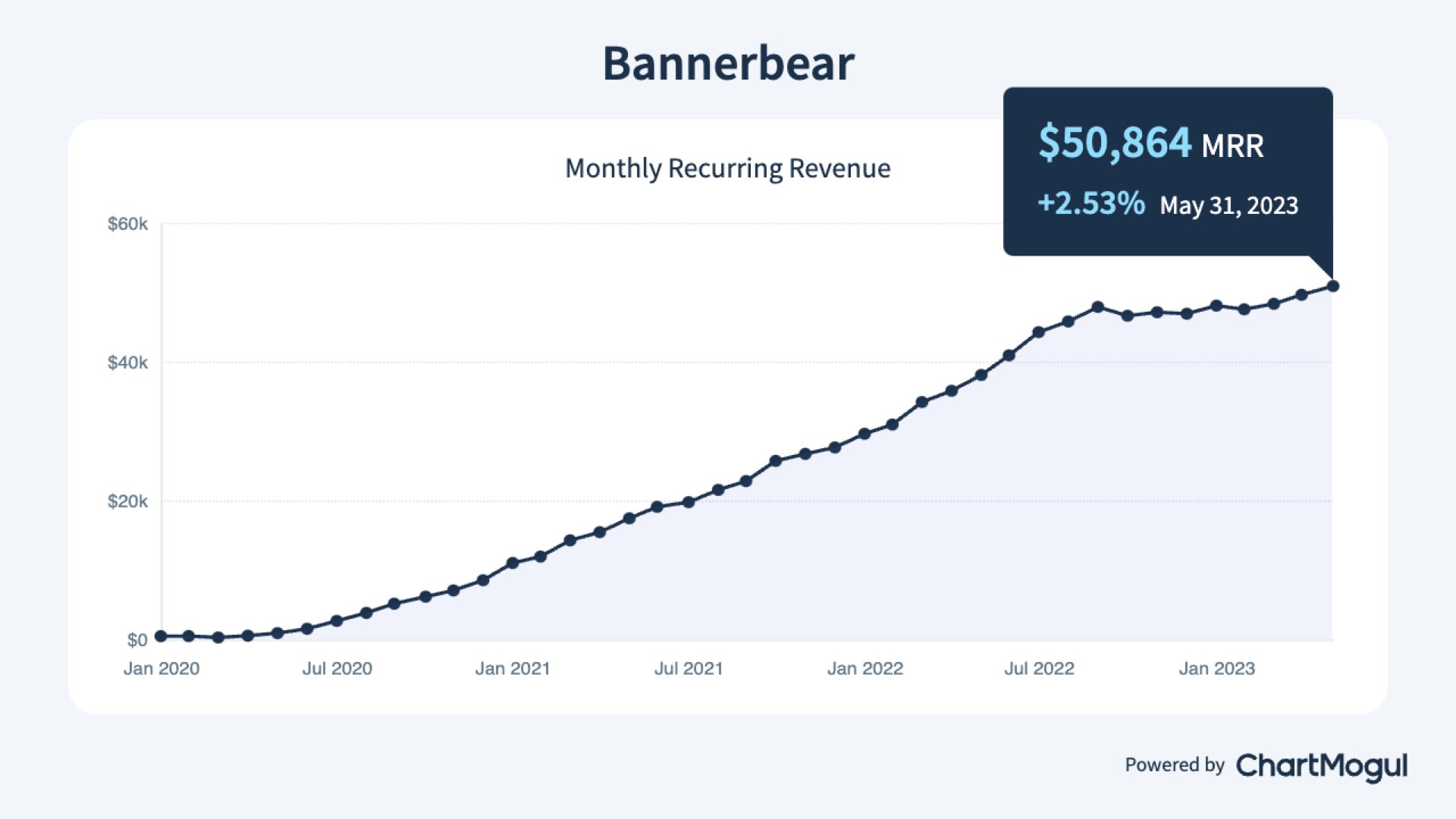
Aim for Product-Founder fit
An underrated quality in early stage startups is the level of Product-Founder fit. That is, how relevant are you the founder in terms of bringing this product to market. Do you have industry experience, do you have some special technical knowledge that gives you an edge, but most importantly are you truly passionate about the business?
The reason why that's important is, it's a crowded world out there. You're going to have competitors, you're going to have copycats. Having genuine passion will make all the difference between you giving up early, and sticking to it through the ups and downs (while your competitors give up). It's the ultimate edge a founder can have.
Don’t price too low
This one seems obvious but early stage founders need to be told this as many times as possible. Don't sell something for $5 - $10. It's hard to build a subscription business off this (unless you're VC funded and can accelerate your growth via spending) but more than that, low prices attract… low value customers.
Ever seen App Store reviews where a customer is going ballistic at a company and complaining about a $3 purchase? You don't want this to be you.
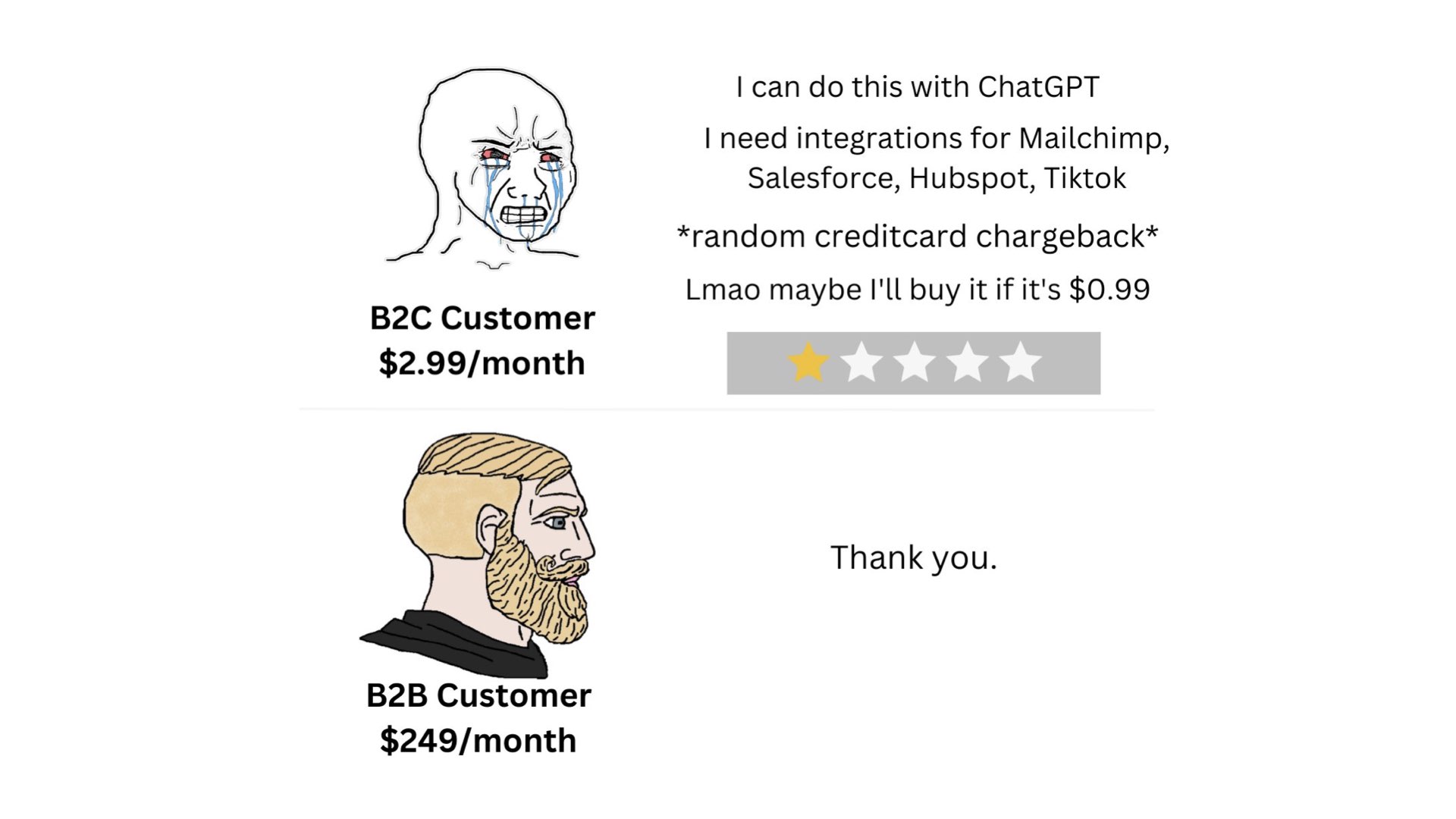
Targeting higher end business customers generally surrounds you with nicer customers, who value what you do, and it's easier to get to ramen profitability this way.
Find out what works and do more
Don't over-complicate your life. If you've figured out some marketing tactic or strategy that seems to be bearing fruit, just do more of it.
There's something to be said for simply being consistent and showing up every day. It's boring and not particularly creative, but it's also really hard to do which means if you can do it you'll have an edge.
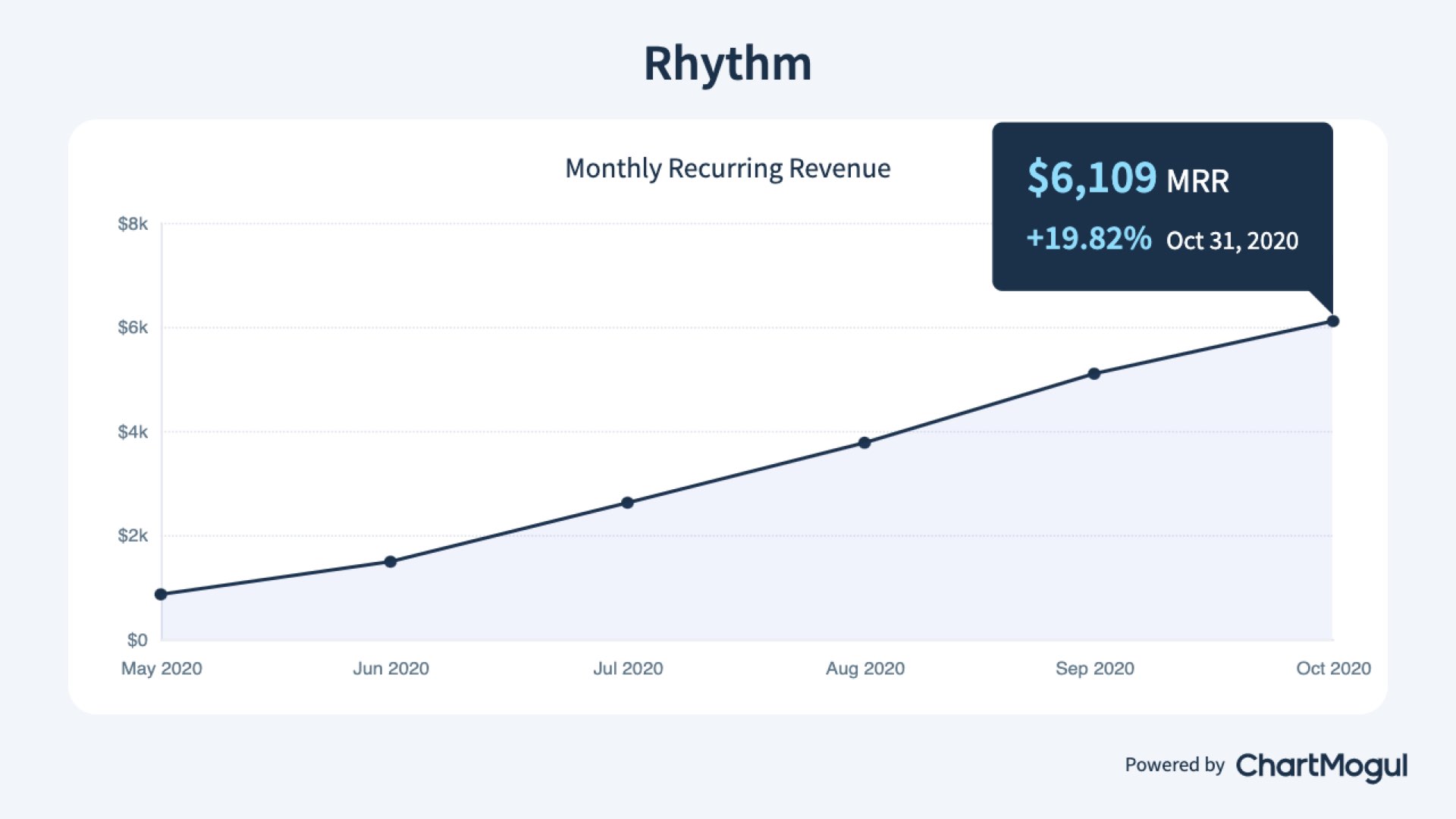
There was a period of consistent growth with Bannerbear where I was being very consistent in my product development and marketing. I would do a week of code, a week of marketing (blog, twitter, forums), and then top it off with an email newsletter. A 2 week cycle, without fail - and my growth curve was a straight diagonal line upwards.
Create free tools
If you're a technical founder wondering what to do for marketing, this is for you. I think one of the highest ROI ways you can spend your time is by creating free tools. They generate a bit of buzz, give people something to talk about, and they consistently bring in traffic if you choose the right tools to create.
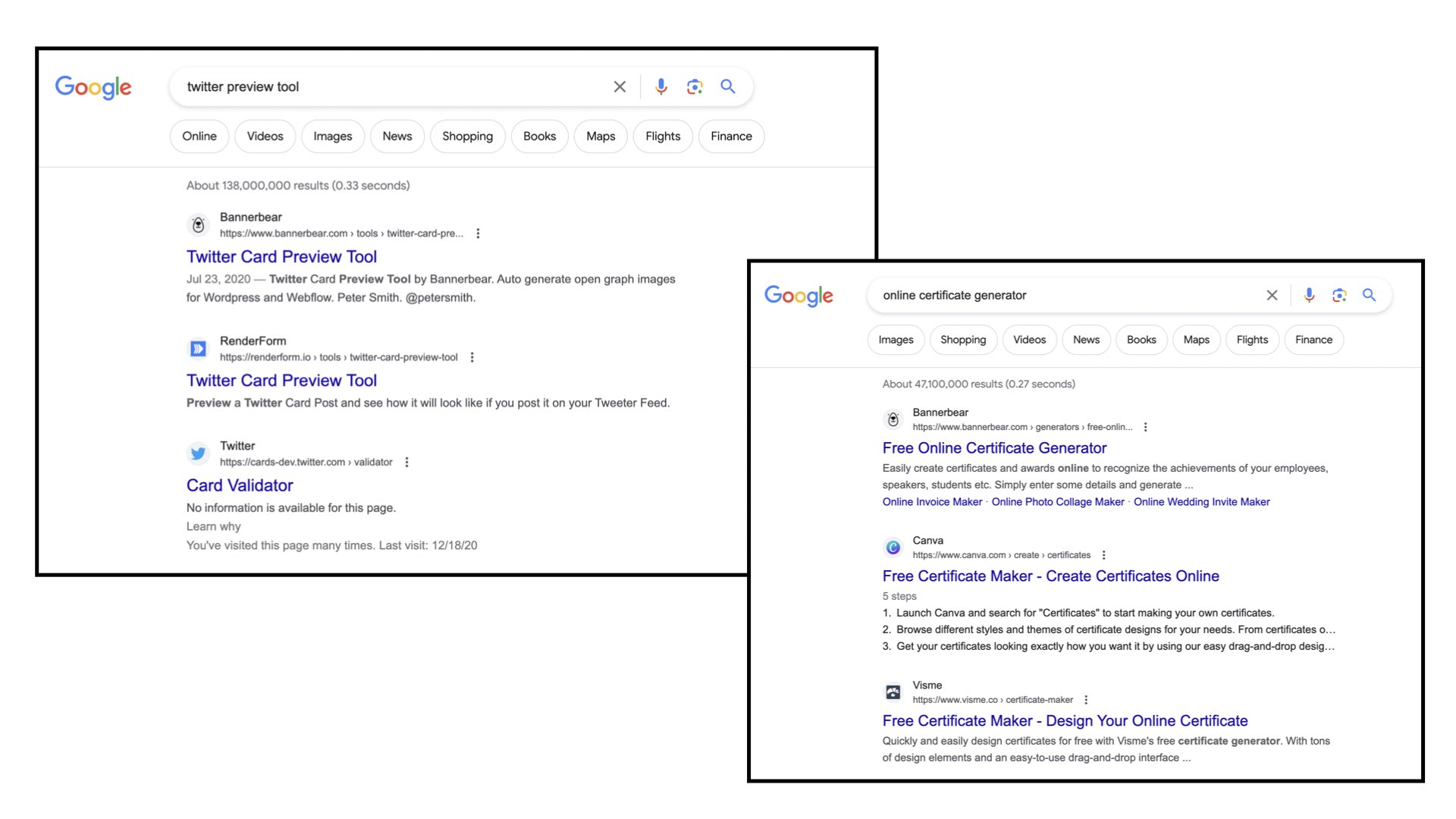
Bannerbear has a Free Certificate Generator, a Tweetagram (Twitter to Instagram) tool, and more. These all consistently bring in traffic - but more importantly we have a lot of backlinks to these tools. Free tools may not necessarily convert users to paid users, but they will definitely help with your backlinks, your search clicks, and therefore your overall rankings.
Be retweet-able
This is really a proxy for saying, be interesting. Don't be uninteresting! Give people a reason to talk about you. One way you can do this is by creating "flagship" content. Content that you spend a bit more time on, that people will want to share now and even in the future. I did that with my previous posts on getting to $10K MRR, then $20K MRR and so on. Even this post and accompanying video, you can file under this category.
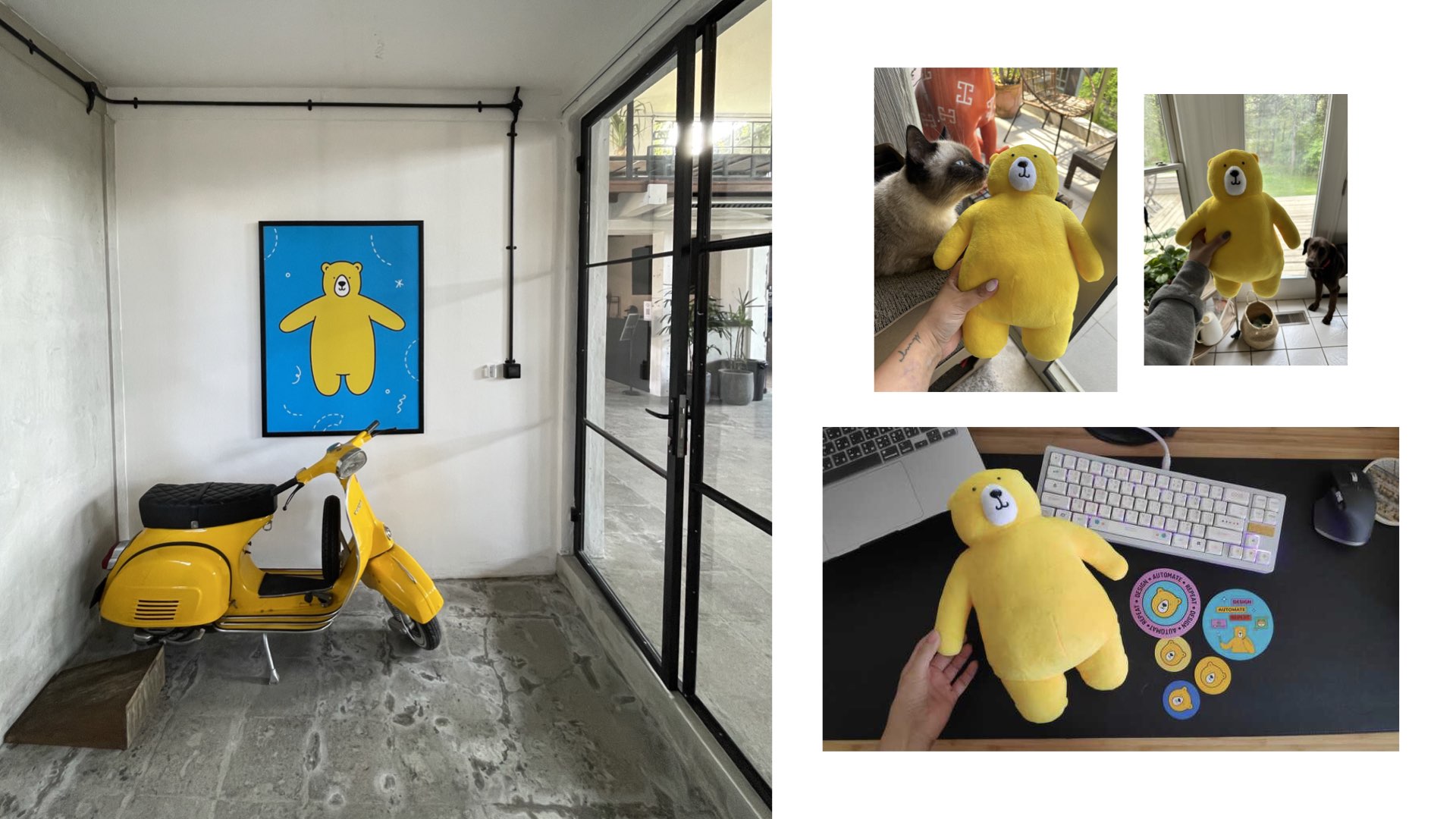
But at Bannerbear we also do a few other things to attract attention and get our content shared. We did a big rebranding last year (the yellow bear), and we do some purely fun, creative things like make teddy bear merch. It just helps us stay top of mind, gives people a reason to remember us, and in today's competitive landscape I think you need to be thinking about this constantly.
Hire when it hurts
Essentially this lesson is about only hiring when you are feeling the pain. For me hiring has been much more effective when I have a specific workload that I just cannot manage anymore, and need someone to take over for me. Customer support is the classic example of this, and is probably the role that most solo founders hire first for.
Where hiring has not worked so well for me is when I hire for a more "aspirational" role. Something that is not part of my current workload, but is something I want to explore. This type of work is not as well defined, and needs more guidance and feedback from me as a leader. But in a small bootstrapped company founders are time-poor and at least for myself, I just don't have time to mentor that role properly.
Migrate to Cloudflare now
Last year we got DDoSd and it could have all been avoided if we were on Cloudflare. The annoying this was, that migration was already on my roadmap. I just hadn't gotten around to it yet or formally committed to a date.
The lesson here is don't put off those important technical migrations indefinitely… get them into the dev calendar and stick to the schedule. As a technical founder there will be one or two things like this per year - major version upgrade of some underlying tech, migration of some services, etc.


